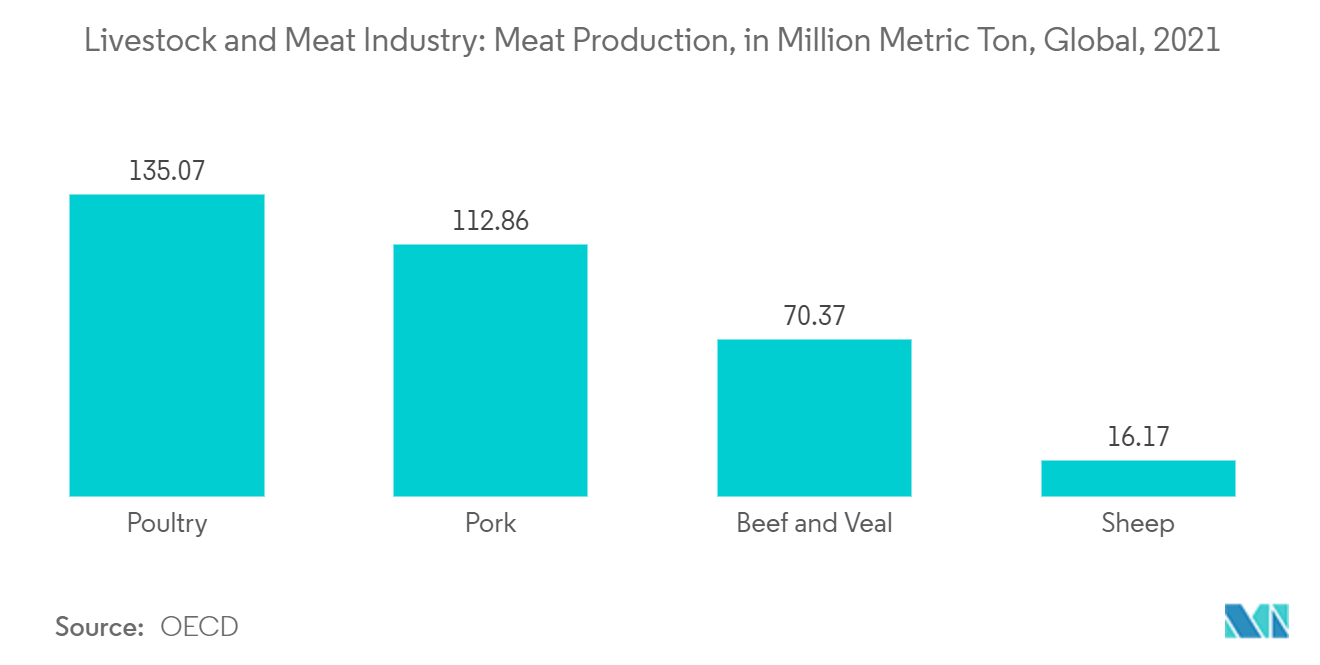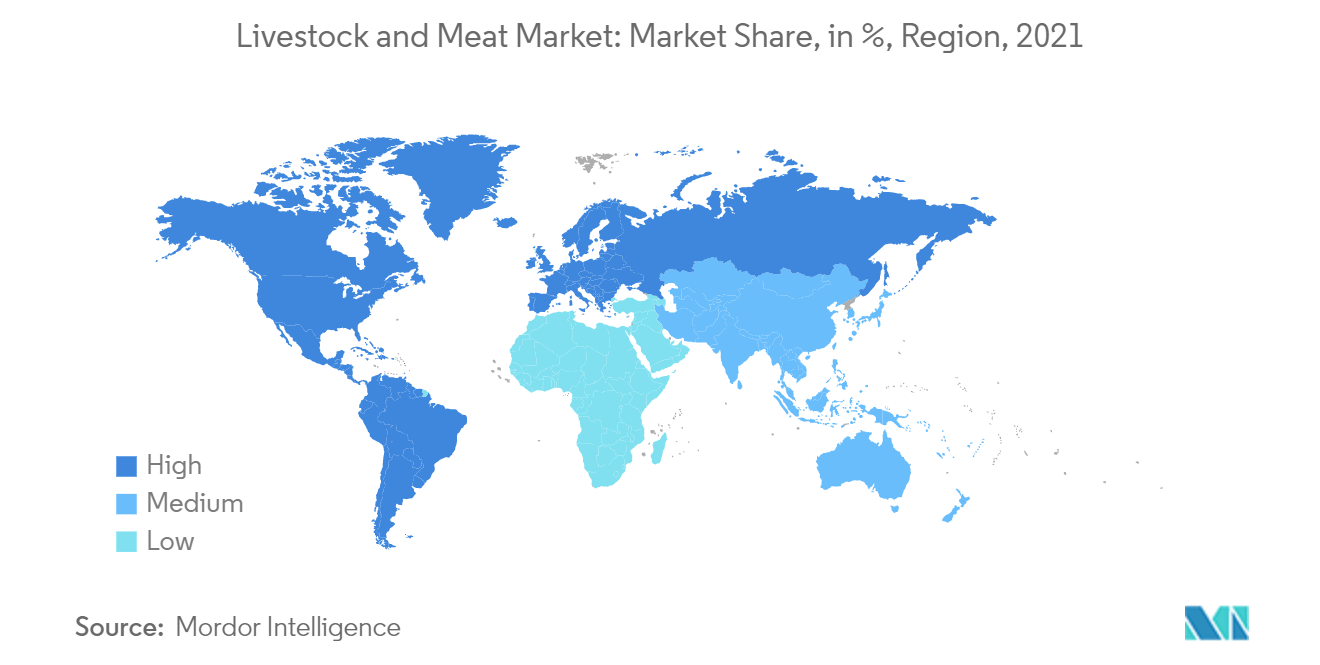Market Trends of Livestock and Meat Industry
This section covers the major market trends shaping the Livestock & Meat Market according to our research experts:
Increasing Demand for Animal Proteins
According to the WHO, annual meat production is projected to increase from 218.0 million metric ton in 1997-1999 to 376.0 million metric ton by 2030 due to the growing demand for protein-rich food, primarily driven by the rising health consciousness among consumers globally. The increasing demand for animal protein, along with the growing consumer preference for low-fat and high-protein diets, has led to a remarkable rise in the consumption of animal protein across the world.
This trend has been driven by the influence of western cuisines across Africa, Asia-Pacific, and especially the Middle East. As per the OECD-FAO Agricultural Outlook 2022 Report, the consumption of poultry meat is projected to increase globally to 154 million metric ton over the forecast period, accounting for nearly half of the additional meat consumed. On a per capita basis, these robust growth rates in poultry consumption reflect the significant role it plays in the national diets of several populous developing countries, including China, India, Indonesia, Malaysia, Pakistan, Peru, and others.

Asia-Pacific is the Fastest Growing in the Market
The growing meat production in the developing nations of Asia-Pacific is leading to high growth in the overall livestock and meat industry. China is the world's largest meat producer, followed by the United States, the European Union, Brazil, and Russia. Globally, livestock expansion is likely to be facilitated by the increasing size and consolidation of production units toward more integrated systems, especially in emerging developing countries.
This trend is due to changes in the dietary patterns of Chinese consumers due to busy lifestyles and rising disposable incomes. The consumption of processed meat has been steadily increasing, in line with income growth, thus driving the meat market in the country.
Poultry meat may continue to be the primary driver of meat production, registering a 16% by 2031. With favorable meat-to-feed price ratios compared to other ruminants and a short production cycle, poultry producers can respond quickly to market signals while taking on board rapid improvements in genetics, animal health, and feeding practices. Production may expand from sustained productivity gains in China, India, and Indonesia.
China's demand for food and meat continues to rise in terms of quantity and quality. With local meat supplies limited by land, feed, water, and supply chain issues, China has to import a significant proportion of the meat from Australia, Brazil, Uruguay, and Argentina. With increasing modernization and urbanization across China, demand for western-influenced low-temperature meat products, such as bacon and ham products, is driving the meat market.
The growing sheep meat production will likely originate in Asia, led by China, India, and Pakistan. However, significant increases are also projected in Africa, particularly in the least developed countries of Sub-Saharan Africa. Despite limitations linked to urbanisation, desertification, and the availability of feed in some countries, sheep and goats are well adapted to the region with their extensive production systems.

